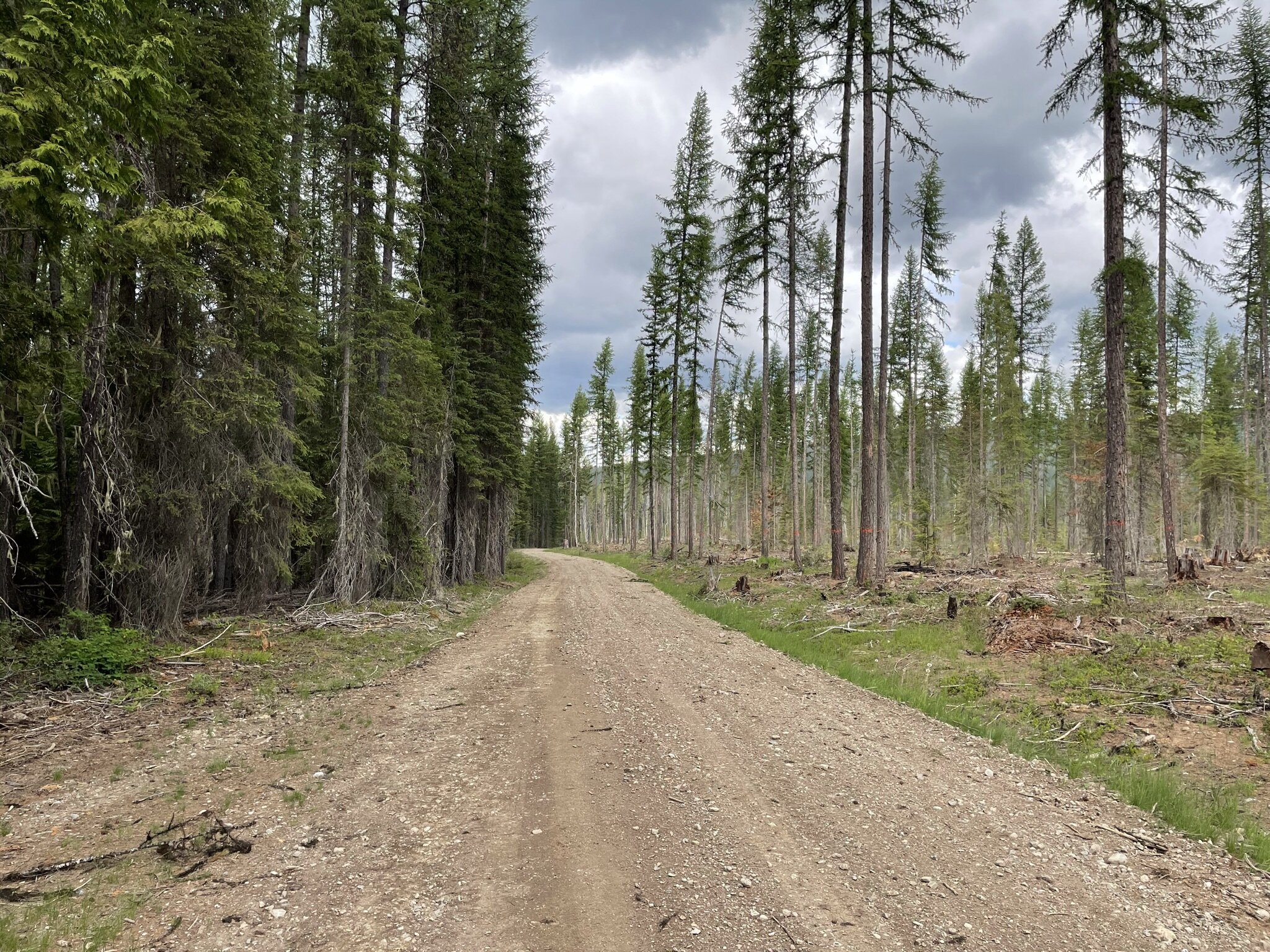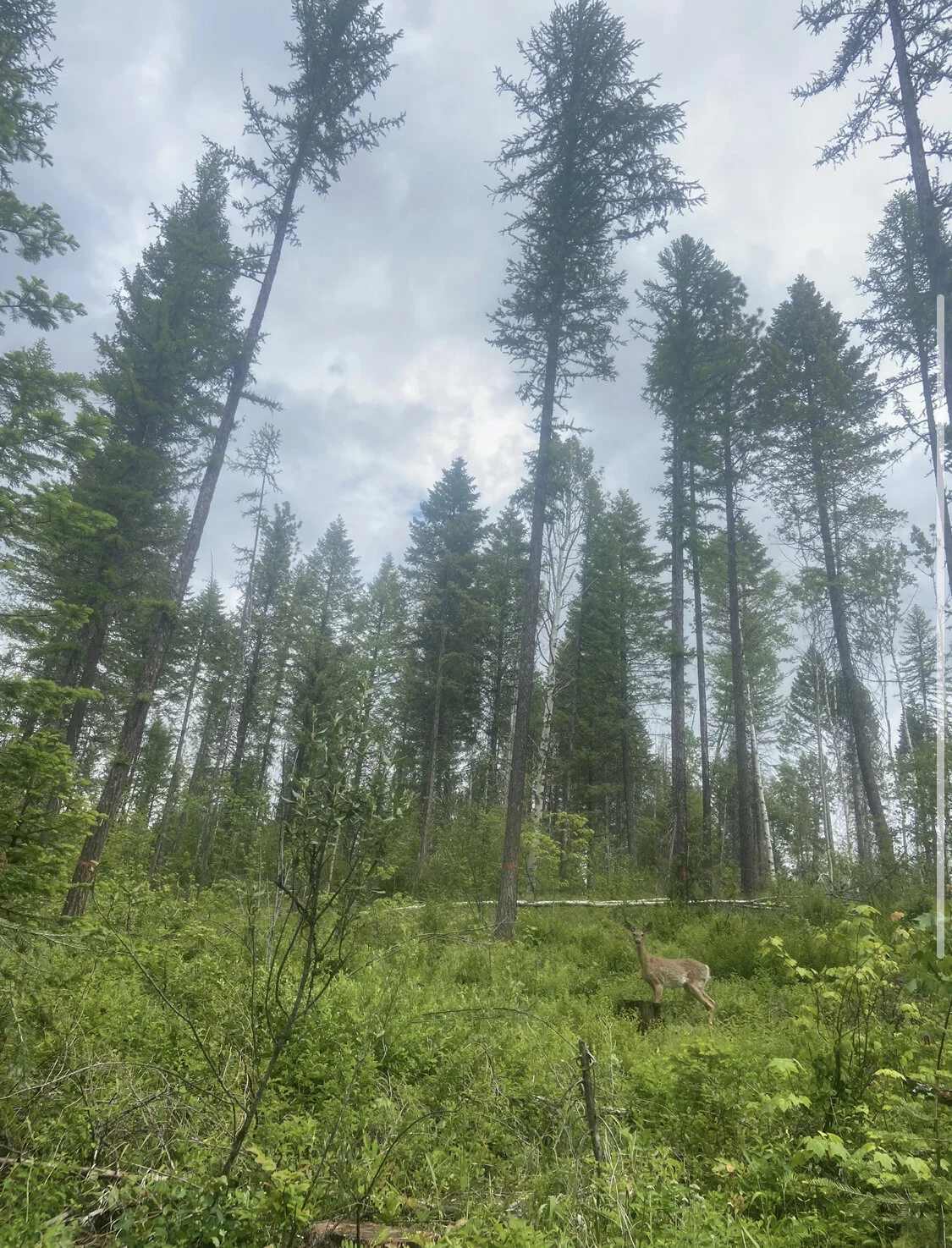Why We Should Dig Deeper on Wood Sourcing
Mass Timber sourced from the Colville National Forest and installed at OSU Ray Hall in Bend, OR
Let’s face it – architects can be know-it-alls. When it comes to how buildings go together, you might even say that it’s a part of the job description. Our traditional role has been to work with building owners to identify their individual needs and assemble a team of consultants to assist with the technical aspects of the design. Generally, for public projects, we will have a series of meetings with stakeholders on the owner’s side, and some limited outreach to socialize and gather feedback on the design with the local community. Since the inception of LEED, there has been a heightened awareness around environmental sustainability that has also influenced the design process, with new considerations regarding energy, water efficiency, and healthy materials. While many architects choose to specialize in specific aspects of design or construction, there are many generalists who relish the opportunity to engage in all aspects of a project and feel confident in their ability to understand and integrate all of these inputs into a durable, beautiful, and efficient piece of architecture. These buildings serve not only their owners, but also contribute to the built environment of the community.
What many of us in the design profession have come to realize in recent years is that this traditional model of design and delivery is generally falling short. When it comes to recognizing the upstream and downstream impacts that the built environment has on perpetuating structural inequalities in our society, and reinforcing the extractive practices of development and construction, it is extremely likely that us ‘know-it-all’ architects know far less than we would like to admit.
With this recognition of our shortcomings and blind spots, both as individuals and as an industry, we are presented with an opportunity: to restructure and rethink the design and construction process through the lens of environmental and social justice . This requires us to go deeper and broader in both our practice and our partnerships, and there are few better partners than Sustainable Northwest.
Restored (right) versus overgrown (left) on the Colville National Forest
For years, many in the Portland design and construction community have likely crossed paths with Sustainable Northwest Wood – SNW’s lumberyard has provided sustainably-sourced wood products for all scales of commercial and residential projects since 2008. The reality is that this warehouse in southeast Portland is in fact a gateway into an organization that has been doing the very real and important work in our rural Northwest communities for over 25 years. This local nonprofit has been organizing and building bridges between rural and urban interests that have resulted in a robust network of landowners, conservationists, Tribal nations, mills, fabricators, developers, designers, and other community stakeholders that supports unique and innovative models for mutually beneficial forest stewardship throughout the Northwest. Thanks to their tireless boots-on-the-ground efforts, Sustainable Northwest has laid the foundation upon which we can now begin building more authentic and equitable circular economies – an idealized model for how our society might operate that is often discussed but rarely achieved.
Which brings us to Oregon State Cascades Ray Hall, and the A-Z Forest Restoration project. When my firm, SRG Partnership, began working with the leadership of the OSU Cascade Campus in Bend to design a new 50,000 square foot academic and lab building, there was a clear imperative to use regionally sourced mass timber in a meaningful way. Working closely with Structural Engineers at Catena Consulting Engineers, and our contractor partner Swinerton Construction, the team succeeded in our goal of delivering a beautiful and energy-efficient building on budget that utilizes glue-laminated beams/columns and cross-laminated timber (CLT) decks as our primary structural system throughout the building.
But we wanted to go deeper.
Thanks to a Wood Innovation Grant from the U.S. Forest Service, we are working with the Sustainable Northwest team to use Ray Hall as a case study in how strategically harvested Forest Restoration Wood can help us make the transition to mass timber architecture in a way that also promotes forest health, mitigates wildfire, and strengthens rural economies. Specifically, we are focusing on the important work being done by the Northeast Washington Forestry Coalition via their Mill Creek A-Z Stewardship Project in the Colville National Forest.
So, what is different about Forest Restoration Wood? And why does it matter that we’re tracking it on this project? Forest Restoration wood is material that is procured through forest thinning – essentially the harvesting of small diameter logs from dense forest stands, aimed at reducing canopy density, providing breathing room for larger and healthier trees to flourish, and creating a more diverse array of flora and fauna to re-establish itself on the forest floor. In addition to removing ladder fuel that can lead to more intense crown fires, a more open canopy condition also helps recharge aquifers by allowing more snowfall to reach the soil, as opposed to having it evaporate from the branches above. It also restores natural conditions that more closely resemble how our forests looked when more frequent but less intense understory fires would seasonally spread to clear the underbrush. As an added result, this restoration has allowed the goshawk, Canadian lynx, and pileated woodpeckers to once again return and flourish in their native habitat. It is important to recognize, though, that the conditions required to successfully implement Restoration Wood harvesting practices would not be as well established without Sustainable Northwest’s support in the creation of robust Forest Collaboratives – the aforementioned group of diverse stakeholders that have come together to determine and oversee the parameters around which this critical forest thinning can successfully occur.
Oregon State University - Cascade Campus - Ray Hall
The reason we need to quantify where and how this restoration wood is used on this project is because we need all-of-the-above solutions to both address our converging crises and transform how we do business. When there is important work like this that is being done at the community level that positively impacts supply chains, it is our responsibility to shine a light on every potential avenue towards a more sustainable and equitable future. As of right now, the Forest Stewardship Council is the standard for specifying and ensuring sustainable wood sourcing in our projects, but the scale and rate at which we need to be changing how we build our buildings is such that parallel sourcing paths focusing on restoration wood need to be recognized, elevated, and explored.
Telling this story also matters because the Forest Collaboratives that have spearheaded these restoration projects represent in many ways a microcosm for how we as a society might be able to meet the imminent challenges we are going to be facing together in the 21st century. The members of the Northeast Washington Forest Coalition represent industry and environmental groups, public and private entities, urban and rural interests – they are doing the real work to build consensus around a shared path forward that simultaneously creates economic, environmental, and social capital. They are actively putting into practice the principles of the circular economy that should be our path forward as an industry and a society, and it is happening, on the ground, right now.
So, after reading this, I probably sound like an expert on this topic, but the reality is - I’m not. There is complexity and nuance to this conversation that I’m sure I have glossed over or, more likely, have completely failed to grasp. And this is the opportunity that we as design professionals have in this moment as we work to course correct our process and our profession – to recognize and embrace what we don’t know and work with a broader coalition of partners that do -- collaborating together to restructure the design and construction industry so we can seek to understand our projects and supply chains in the context of not only the ‘how,’ but also the ‘why’. These partners can be developers or owners. The Meyer Memorial Trust is a great example - they are putting equity first and are looking to not just create sustainable architecture, but to use the construction delivery process itself as a vehicle for empowerment. These partners can be design justice experts, who disrupt and reframe our traditional ways of thinking about the impacts of our built environment, and challenge us all to find new ways to meaningfully work with and not just for the communities in which we live. Or they can be environmental nonprofits such as Sustainable Northwest – organizations who have been embedded in our community doing the hard work for decades, preparing us for this pivotal moment in history in which we find ourselves today.
Colville Nation Forest - restored site






